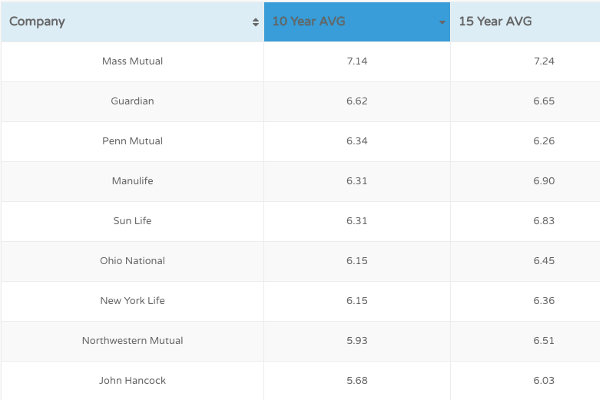In 2020, there were an estimated 1.8 million new cancer diagnoses. While numbers have improved significantly from decades past, the threat of cancer is still genuine for many Americans.
There are many challenges associated with a cancer diagnosis€”one of the largest challenges in obtaining insurance coverage for associated treatments. Unfortunately, obtaining life insurance for cancer patients tends to be much of the same.
There are two different types of cancer patients in the life insurance industry's eyes: those who are actively battling cancer and those in remission.
Current cancer patients will have a more difficult time finding coverage than those who are survivors. The exact types of coverage available will vary widely based on the unique circumstances of the case. Either way, life insurance for those with cancer on their medical records will most often face higher health insurance rates.
Plus, a family history of cancer can play a role. The severity depends on the case, but most of the time, rates increase when family history is present.
While there are various restrictions on life insurance for cancer patients, not all hope is lost. Keep reading to find out more.
Life Insurance
While the insurance industry can seem confusing, there are many benefits to life insurance coverage. It helps provide comfort and peace of mind to friends and family after death. With such an already emotional time, taking away the financial burden can be a huge relief.
Costs including end-of-life care and funeral and burial expenses are easy examples of these costs. But besides, debts left behind and loss of income can take a huge toll on loved ones.
However, shopping for insurance when medical issues are involved can be confusing. Plus, doing so while in a pandemic adds another layer of difficulty.
It's All About Risk
When thinking about it from the perspective of an insurance provider, it's all about risk. This is why so much information about health, family history, and other factors are considered when calculating the cost of insurance premiums.
Insurance providers are essentially making a calculated risk by insuring people and structure their models after this concept. As such, insuring people who are already sick with a life-threatening illness is very risky.
In some cases, when an illness is very severe, or the prognosis is severe, insurance does not always work out. The cost of insuring may not be worth the return. This is why it is important to compare policies and consider all options when considering life insurance for cancer patients.
Unfortunately, life insurance for cancer patients is not always available. If it is available, rates tend to be higher along with restrictions involved. It is important to use the power of the internet to shop around and compare policies for cancer patients' life insurance.
Types of Life Insurance for Cancer Patients
While it may seem like an uphill battle, getting cancer patients life insurance is not impossible, the exact pathways will vary based on the disease, its severity, and the prognosis associated with it.
It's important, to be honest when seeking out life insurance for cancer patients.
If the insurer proves that an individual purposefully misrepresented their health when applying for a claim, they can deny the beneficiary's payout after death. This will cause even more pain and confusion during an already difficult time.
Each type of cancer is treated differently in the life insurance industry. Each disease and variation will have different policies and, thus, different prices.
Current Cancer Patients
Unfortunately, the types of life insurance for cancer patients who are actively battling diseases are slim. Patients are usually only eligible for guaranteed issue policies. These are limited in their coverage and restrict payouts in the early years of the policy.
This could be in the form of guaranteed whole life insurance (that is severely restricted) or group life insurance (usually with a waiting period).
Guaranteed Life Insurance
This coverage is also known as "burial insurance." This covers the patient for as long as they live and can still be purchased even with an active cancer diagnosis.
However, they are more expensive than the typical life insurance policy and come with various restrictions.
One restriction is age. These policies are usually designed for seniors, so they are usually not available to those under 45.
Another limitation is for the death benefit. The maximum amount for these types of policies is $25,000 to $50,000. This would very likely still be enough to cover funeral expenses. However, it may not leave the beneficiaries with a large sum.
One final key restriction to consider is the waiting period. The duration will vary by policy, but it typically spans two to three years.
This means that if someone dies before this period expires, their beneficiaries will not receive the death benefit. For terminal patients who are likely to pass away sooner than this, a guaranteed life insurance policy may not be the best option.
Despite these restrictions, this is typically still the best life insurance for cancer patients.
Group Life Insurance
This may be an option for cancer patients, with insurance available through certain organizations.
These may be through an employer or with veteran status. If these organizations' insurers allow it, individuals with cancer may still be able to purchase life insurance.
It really depends on the terms of the insurer and their plans for exact rates. One major benefit to this option is that coverage rates are based on age, rather than health.
As such, cancer patients will not face higher rates for group guaranteed issues coverage. But generally speaking, group life insurance rates are higher than standard term insurance policies.
Cancer Survivors in Remission
By 2026, it is estimated there will be more than 20 million cancer survivors in the United States alone.
In the past, it might have been more difficult for survivors to obtain life insurance. Luckily, things have begun to change for the better. For those former cancer patients who have been in remission, the landscape is a little different.
Those who have been out of treatment for two to five years are significantly more likely to be eligible for a more traditional life insurance policy. This could include a term or permanent life insurance.
However, it's important to note the rates will likely be higher than an individual who has never had cancer. Some forms of cancer can disqualify this coverage altogether.
For those that qualify, both term and permanent life insurance do cover death due to cancer. They are only precluded from policies designed for accidental deaths.
Otherwise, the insurer pays out a death benefit to the beneficiaries after death. This means the designated family members would get a lump sum payment from the insurer.
There is usually a waiting period from the last cancer treatment time to when a survivor is eligible for coverage. This depends on the insurer, the type of cancer, and its severity, but it can range from two to five years.
Qualifications for Cancer Survivors in Remission
Generally speaking, cancers that have spread throughout the body are considered higher risk and can lead to rejection for life, like leukemia or pancreatic cancer.
Those high-risk cases that do qualify carry nonstandard, or higher rates. These may include melanoma or cereal cancer.
Moderate risk cancer survivors usually had breast cancer, prostate cancer, testicular cancer, or thyroid cancer. They may be eligible for standard rates.
Only cancer that is low-risk enough to qualify for a preferred rate potentially is nonmelanoma skin cancer. However, a patient would still need to be years post-treatment and be considered very healthy.
It is likely individuals will have to provide a wealth of information to prove the status of their cancer, including:
- The original diagnosis, including the type of cancer, its stage, whether it metastasized
- Family history of cancer
- Treatments underwent, including dates of first and last treatments
- Length of remission
- Location of cancer, its size, its effect on lymph nodes
- Relapses (if any)
- Current medications
The more information one can provide€”especially in the form of medical records€”the smoother the life insurance application process will go.
Selecting the Best Life Insurance for Cancer Patients
When seeking out life insurance for cancer patients, it is essential to weigh all options. Shopping around and comparing policies is the best way to find the policy that best fits your needs and personal situation.
Consider using a site that allows you to quickly and easily compare life insurance options.
TopWholeLife is that site.
Contact an expert advisor today for more information on life insurance for cancer patients.




